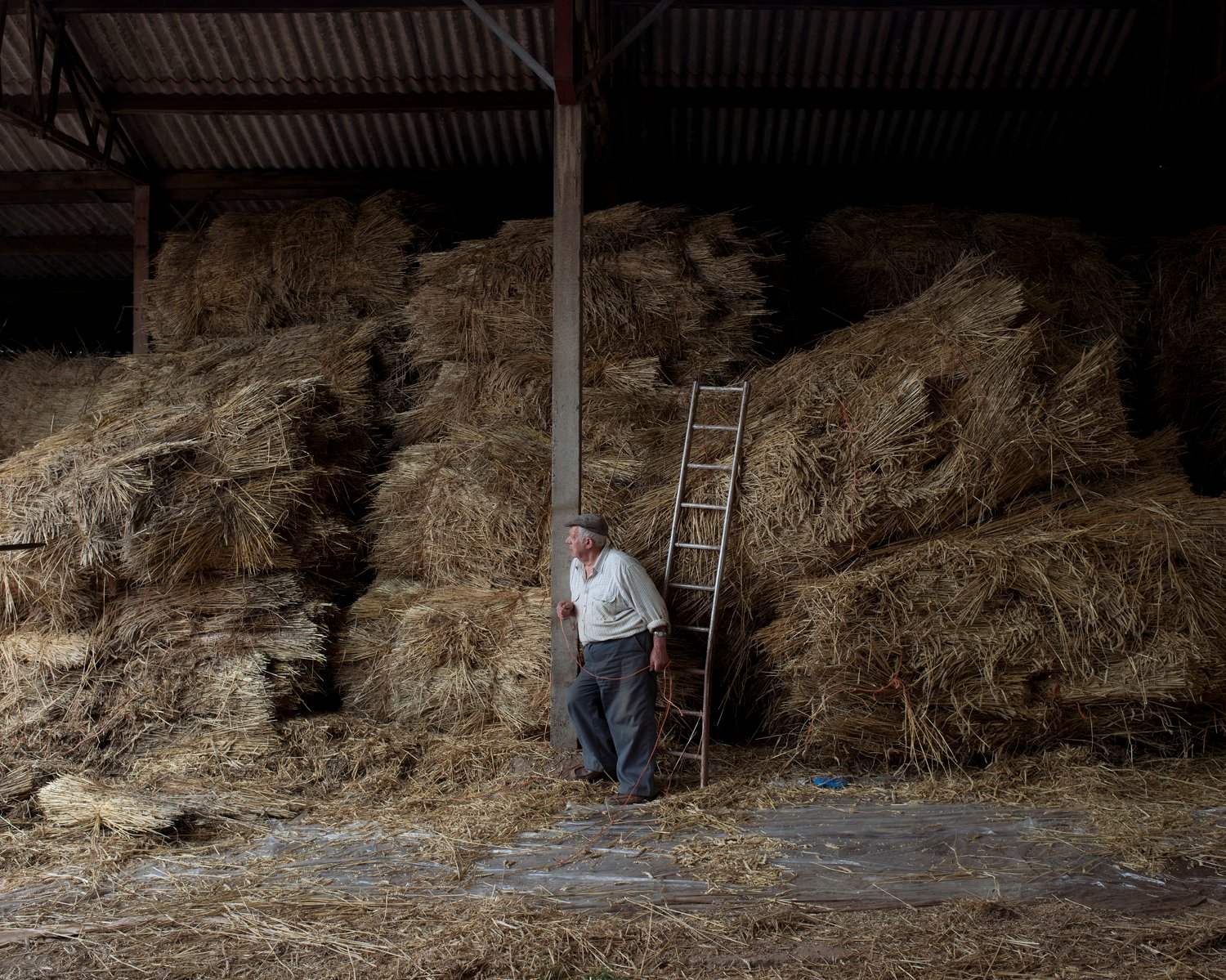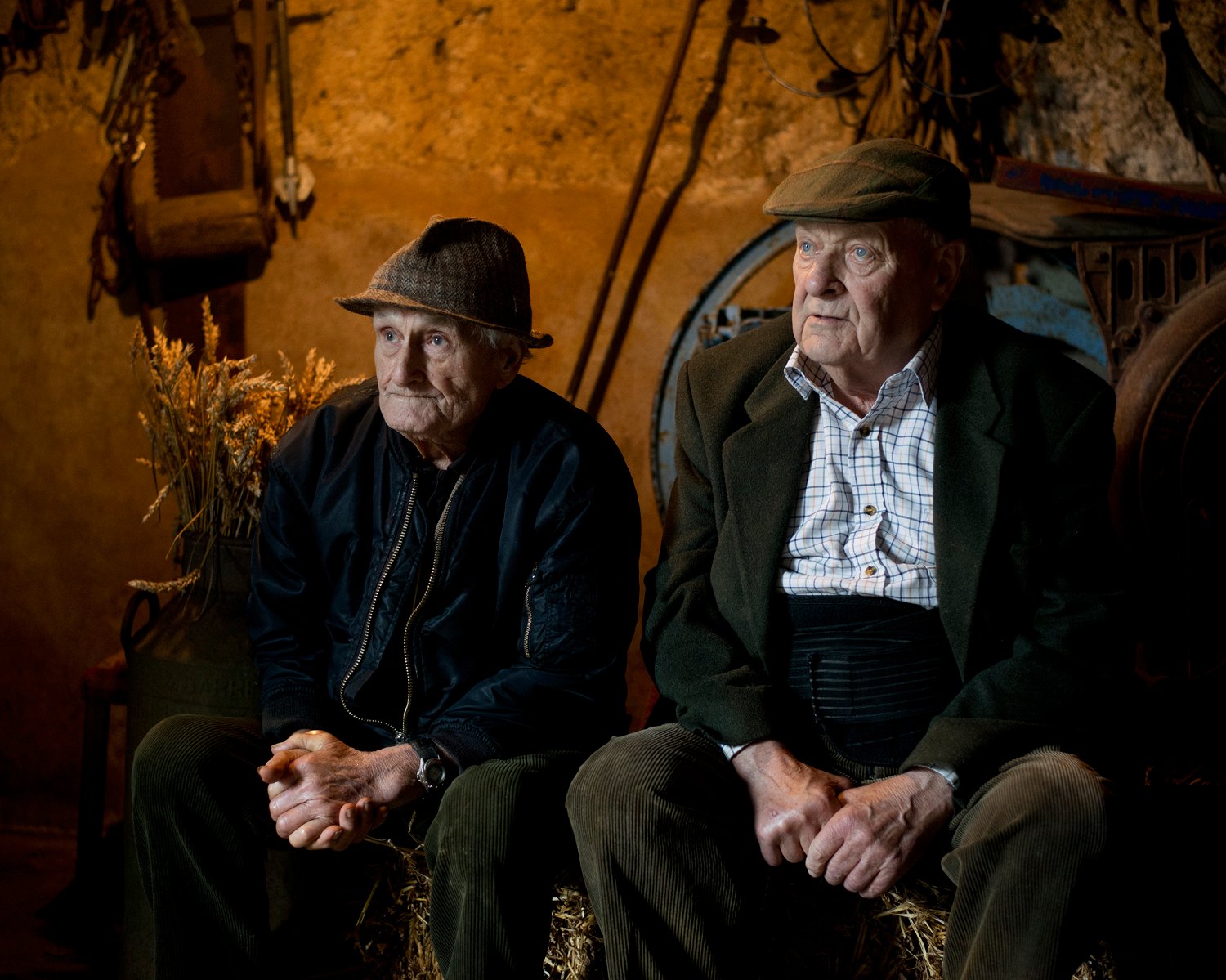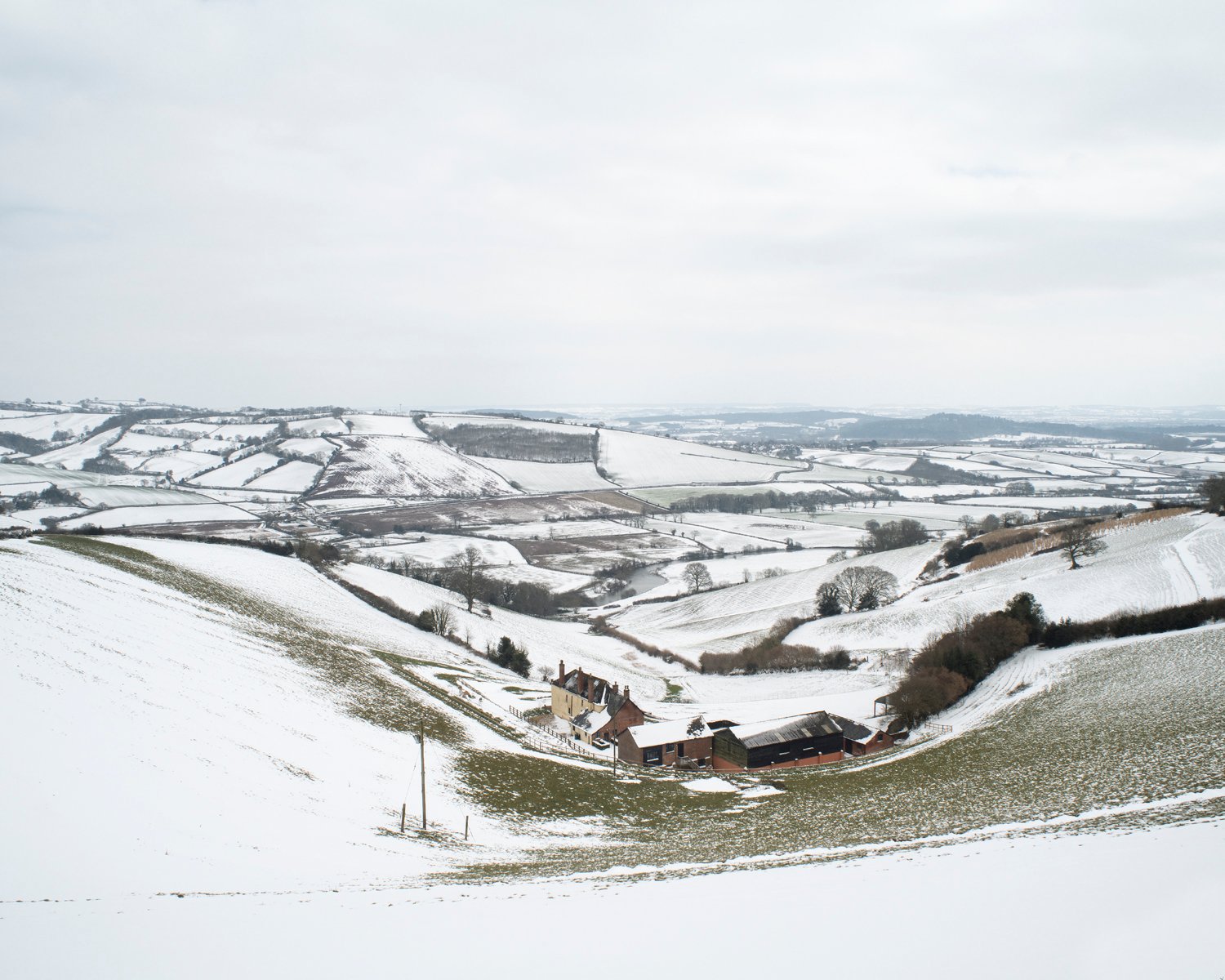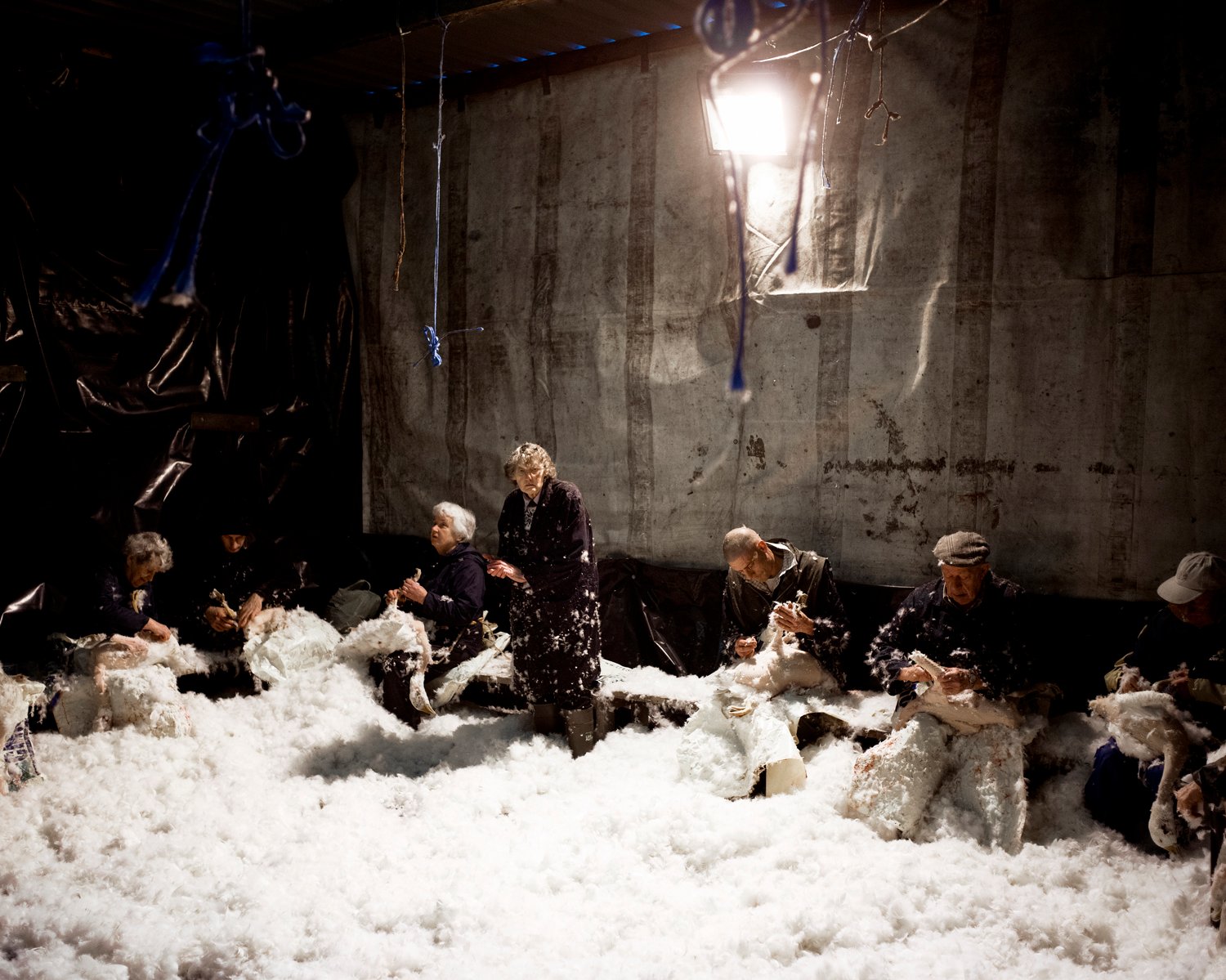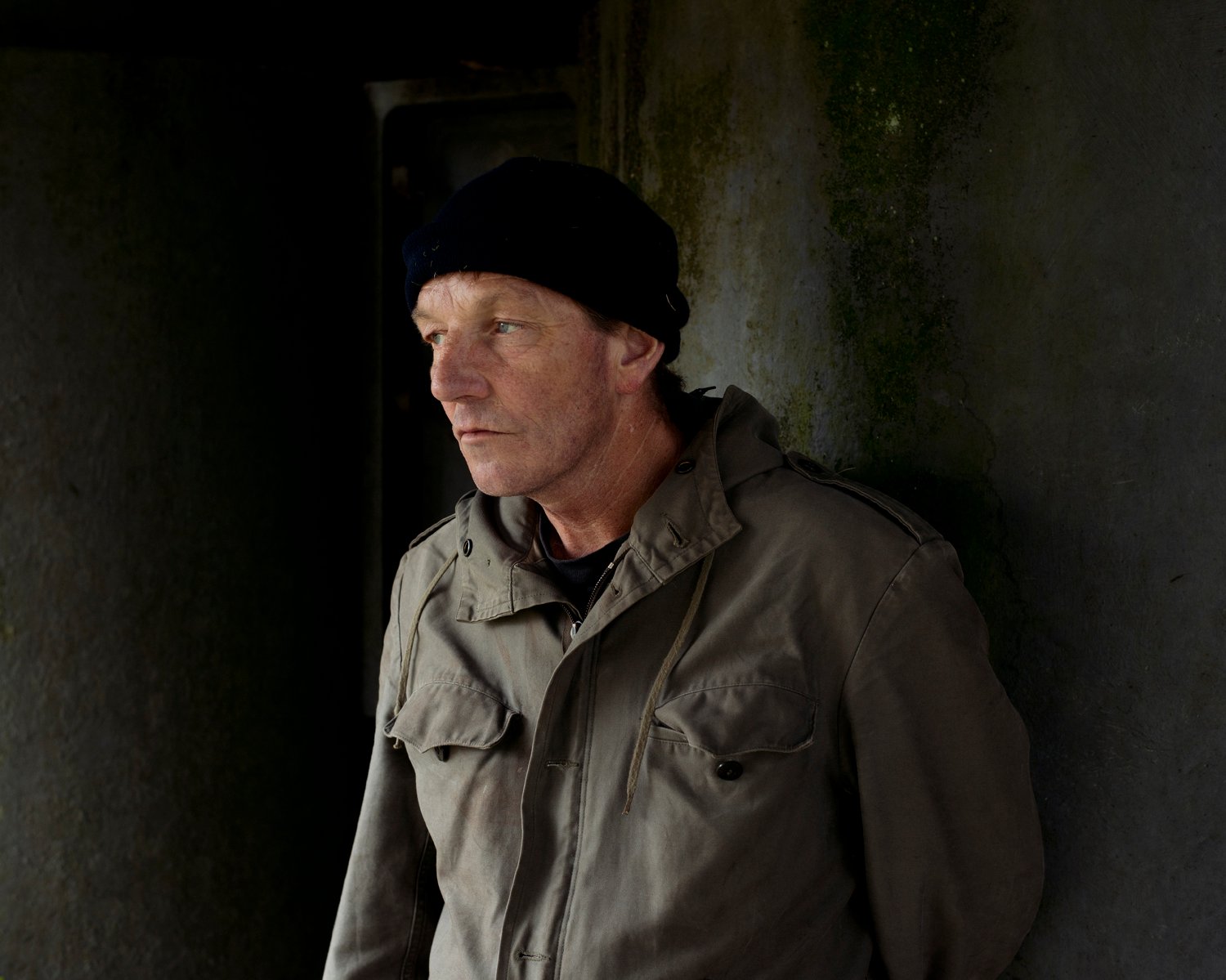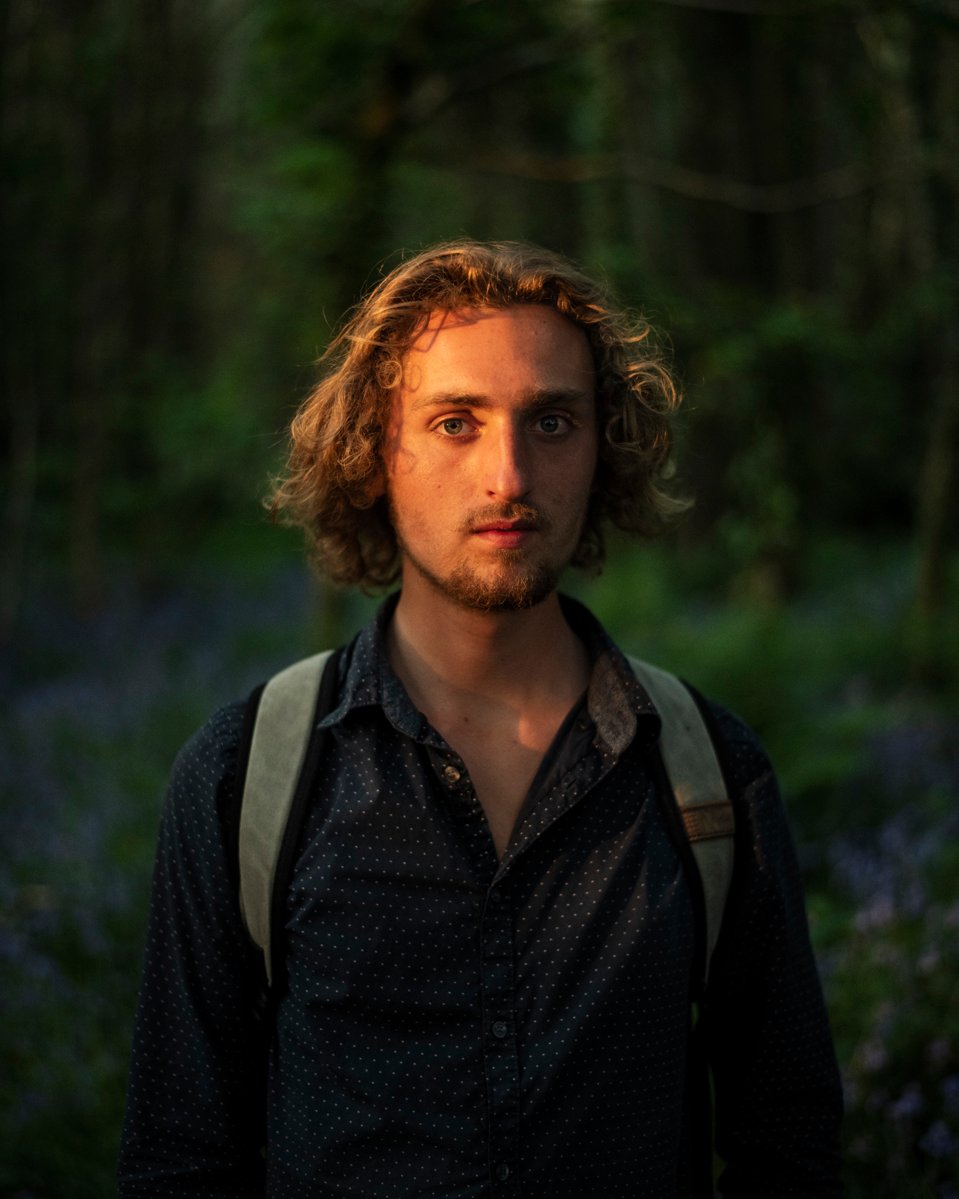After returning to University at 34 years old, Robert Darch is now amongst many things, a photographer, a curator and an educator. Working hard within communities and running a collective for 16-21 year olds, Darch has been working on a number of his own successful projects that this year will be exhibited alongside the likes of Martin Parr and Tish Murtha at Distinctly Britain, in Pingyao International Photography Festival in China. Robert describes his work as being “motivated by the experience of place” and states that his projects are almost always initiated by an emotional response to a particular landscape. We got the chance to speak to Robert and ask him about his practice.
Robert, you’re originally from Birmingham and moved firstly to Wales and then to Plymouth to study. Geographically speaking, how much of an impact has leaving Birmingham had on the development of your photographic practice and career?
That’s a hard question to answer as my route to the present day hasn’t been particularly conventional, so I’ll give you a bit of a timeline first. I was born in the late 1970’s in Birmingham but then moved a little further south to Worcestershire when I was five years old to a small town called Droitwich, where I lived until leaving for University at 21 to study photography. After a year of University I became unwell (I will discuss this later) so moved back to the Midlands until relocating to Devon with my parents when I was 29. I was 34 years old when I returned to education, studying for a Masters in Photography & the Book and then an MFA at Plymouth University. It was during this period that I really created and developed my practice. However it’s slightly more complicated than saying it started then as if in a vacuum, as everything that preceded this return to education inherently informed the work I am making now. From my formative childhood experiences in the Midlands exploring the surrounding countryside, to the knowledge and history I gained from the documentary photography degree in Newport and the years I was ill, living my life vicariously through fiction, day dreams and films. I didn’t chose to move to Devon, it was fate and circumstance that brought me here, and yet had I not become ill I doubt I would be the photographer and person I am today. I wouldn’t have met my girlfriend Jessica who has been so supportive, or found myself living around the corner from Jem Southam. Both of them persuaded me to do the Masters, so leaving the Midlands has had a profound impact on my career, practice and life.
Speaking from a cultural perspective, do you feel a change of scenery offered any immediate alteration to your own viewpoint and perspective?
When I return to the Midlands, it still feels like home, I think this is probably true for most people if they spent their childhood in one place. When I return to the Midlands I now see everything differently, the landscape has stayed more or less the same, but my interpretation of it has changed. I see the place from a new perspective, which has a lot to do with going away, but also more importantly about how I’ve developed as a person and a photographer.
There’s a healthy mix of portraiture and landscape within your projects. How do you approach each style differently and yet still make a series come together?
For me a project generally develops from an interest in a specific place or landscape. I always spend some time exploring, taking photographs and thinking to allow ideas to develop. It’s really important that I have an emotional response or feel a connection with a place before I can start thinking about working in that environment. I also don’t try and limit myself in terms of how the series can evolve; it could be a documentary project, a constructed series or a mixture of both. The constant is always the landscape and how people use and inhabit that space. In terms of bringing people into the landscape, it’s important for me that they feel like they belong within that environment. For a series like Durlescombe, that isn’t so hard as it is essentially a documentary project, and I am photographing people already in their natural environment. Whereas for my series ‘The Moor’, I chose all the people I photographed and put them in specific locations and situations. In these instances more attention has to be paid to how the people look and dress so that it feels like they belong in that space. I don’t particularly like photographing models or actors as they always try and give you something, a pose or a performance, so instead I just ask people I know, have met briefly or are friends of friends. Although the contextual situation of The Moor is fictional, it was important to me that I worked with people that had some relationship with Dartmoor, or that their personalities and lives offered something that complimented my constructed narrative for the project.
Robert you have mentioned previously that your practice is ‘motivated by the experience of place, in which the physical geography and material cultures of places merge with impressions from contemporary culture that equally influence perception’. Could you maybe elaborate on this statement, why is contextualising a personal response to place of particular interest to you?
The work you make as a photographer is always subjective and I think should be a reflection of yourself. My projects are almost always initiated by an emotional response to a particular landscape. This can be informed by memories of a similar place, or influenced by a book, film or piece of art, or often it’s a combination of both, memories which have blurred with contemporary culture. For example my series The Moor was influenced by my early impressions of Dartmoor as a child. My first memory was hearing hunting dogs baying on the moor when I was two years old. This memory and my early impressions of Dartmoor have since blurred with ‘The Hound of the Baskervilles (Book & Films), Famous Five books, 1970’s Children’s Film Foundation movies and latterly dystopian fiction. These are just some of the elements that informed ‘The Moor’, all contributing to an impression of ‘place’ which I then realised in the project. Interestingly the episode ‘metalhead’ (A dystopian story about killer robot dogs, filmed in gritty black and white) from the last series of Black Mirror was filmed in several of the locations I photographed for The Moor. I think working in this way captivates me as I am creating an environment and story from my imagination. I am also a slightly frustrated film maker! So that’s why the series feels like it could be cinematic stills from a film. If the Moor was a film the soundtrack would obviously be by Tangerine Dream. I am currently working with Another Place Press to publish The Moor, which will be available to buy later this year.
Durlescombe is one of your on-going projects. It is a mix of documentary-style imagery and archival images from Beaford Old Archive. Could you tell us a little about the project and why you decided to present the series in such a way?
I am using the conceit of this imaginary place/name, ‘Durlescombe’ to explore a lot of ideas. Primarily I am documenting the history and practice of working with the land and also examining my own attachment and family history related to this area in Devon. This includes my early memories from holidays and also this ‘other’, that which is carried with us from past generations. Fate brought me back to Devon and unbeknown to myself I began exploring places that directly related to my own personal family history. I feel a deep connection to Devon and the landscape and I am using Durlescombe to try and understand this relationship. My ancestors used to work the land, owning grain mills across Mid-Devon for many generations. Sadly there are no longer any working commercial mills, most have been knocked down, fallen into ruin or been converted into homes. So initially I made contact with threshers who process wheat to make thatch for houses, an old craft which hasn’t changed much in the last century. In the autumn a retired farmer I met whilst following the threshers invited me to watch him make cider. He used the left over wheat to sandwich the layers of apple to stack in the press. For me this connection between the wheat being harvested for thatching and processed in the summer and then used in the autumn for making Cider was a beautiful thing and told me a lot about working with the land.
Alongside these primary influences I am also creating a specific sense of place, one that is my own personal subjectivation of a Devon that already feels slightly lost. I have a tendency to be nostalgic so I have tempered this with glimpses of modernity, and although I am interested in the rural idyll my wish isn’t to create a chocolate box representation of it.
At the age of 22, you were diagnosed with a minor stroke. You have talked previously about how your project ‘Vale’ is part of a nostalgic reinterpretation of summer, youth and the freedom associated with that difficult time, though seen through tainted eyes. Looking back, would you say that this period gave you an opportunity to reflect on your practice? or did you feel like you’d lost out on valuable time?
I started studying Documentary Photography at Newport, Wales in 2000 and this was where my formal education in photography began. It was exciting and I thrived in that environment, enjoying spending hours photographing and processing film in the darkroom. As most students can hopefully relate to there was a great sense of community, energy and expectation at Newport. Paul Seawright, Ken Grant and Clive Landen were my tutors and their work and lectures really influenced my early practice. My final project in the 1st year was a series of images of a park in Newport, it was my first considered work about a specific place.
Just before the start of my second year I got rushed into hospital after a suffering a seizure, which was later diagnosed as a transient ischemic attack (a minor stroke). It was a terrifying experience and would affect me mentally for years to come. I didn’t recover from the TIA, I felt constantly weak, nauseous and dizzy and a couple of months later I was diagnosed with Glandular Fever and then a year later with M.E. or chronic fatigue syndrome. It took me four years to complete my degree, mainly working from home in the Midlands – as I was housebound for several years I turned the camera inwards making a subjective work about my situation. Initially this was a work about my own personal circumstances, which I then expanded for my final project, making contact with other young people suffering with M.E.
After completing the degree I no longer wanted to turn the camera inwards and as I wasn’t able to regularly get out to take pictures I didn’t make any considered work during my illness. However, whenever I could I took pictures as it is something I feel compelled to do. It was a hugely frustrating period of my life, I watched people I studied with finding their way in the world, winning awards and living their lives. I had no control over my own life and that was the hardest thing to accept.
It took close to a decade to fully recover from the illness and then overcome the anxiety of re-entering the world. In 2010 I moved from voluntary work into paid employment – working in the youth service and at an art centre. I was now living in Exeter and as fate would have it just around the corner from Jem Southam, someone whose work I had always admired. A year later I met my current partner Jessica, who was studying with Jem on the Masters at Plymouth and I would occasionally attend some of their Masters sessions and the visiting lectures in Plymouth. Both Jessica and Jem suggested I should do the Masters – I didn’t have a photographic practice at this point – I was doing some commercial photography work, but mainly filming and making documentaries for arts organisations. Psychologically I was reticent about returning to education and reigniting those aspirations I had at Newport, but I really wanted to start working on projects again and doing a Masters would allow me the time and opportunity to do that. David Chandler was really supportive during this period, specifically on the MFA; his advice was really beneficial especially when I was developing the Durlescombe project.
Those years of ill health were extremely hard, but that experience has taught me to accept adversity and also to learn how to be happy and content with life. I really appreciate any opportunity I now have and every achievement has added meaning for me.
Moving on to your life outside of taking photographs. You run a collective called Macula, which is a collective of young photographers, aged 16-21. Could you tell us about it?
I initiated Macula in 2012, it started off life as a small photography group called Fotoclub for young people aged 15-21. I had been working in the youth service and left just before the Conservative government cut all the funding for youth provision, and because of this I wanted to offer something else for young people. I chose to run the collective voluntarily as I wanted to be able to offer a relaxed space where outcomes weren’t an expectation and share my love for photography. The group evolved over the next couple of years and having members like Tom Coleman (Unveil’d) join really helped shape the direction and ethos of the collective. In September 2017 a lot of the core members left to study at University so we are building up a new group. However those that have left return during academic breaks and keep involved with the collective online. It’s lovely to see the friendships that have been formed in the Collective, three of the guys are now living together in London and they kindly put me up during Photo London this year. Macula is easily the most fulfilling and rewarding thing I have done and it’s a genuine pleasure to see the members develop as photographers and individuals.
How important do you think it to encourage young people to become involved in the arts from an early age?
Obviously I think it’s really important to encourage young people to be creative, active and engaged. I don’t think it necessarily has to be art, but I think it’s great if they can learn to be passionate about something, this could be football, nature, politics, music, or sport. Macula is a photography collective, but it’s really about exploring, being outside, looking at and engaging visually with the world around us. A lot of the time we are in nature as we are a bit spoilt here in Devon, but often we’ll spend the evening walking around a housing estate, going to the corner shop and just sitting on a curb chatting.
Dodo Photo is a private studio that you share with fellow photographer, Jessica Lennan. In the past you have curated exhibitions with photographers such as Sian Davey and your collective, Macula. How valuable do you feel it is to have free or low-cost exhibition spaces readily available for artists?
My partner Jessica Lennan initiated Dodo Photo in 2013 alongside two friends with whom she studied with at Plymouth University. This incarnation of Dodo Photo ran for a couple of years and was then revived when Jessica and I took over the space. Ultimately it isn’t easy running a photo space in the South West, so primarily we now use Dodo as our private studio space and occasionally exhibit work as we did during the last Unveil’d Festival with Sian Davey’s Martha series and most recently Jessica’s work, the candidates. Jessica lectures fulltime in photography and I have my practice, commissioned work, part time jobs, Macula and work with Unveil’d, which doesn’t leave a lot of time to plan a programme of events for Dodo. As for everyone it’s often about finding a balance and I would much rather be taking pictures than taking on a more permanent organizational role, so this informal running of Dodo suits us both. Having said that I think it’s really important that there are spaces for artists, sadly Exeter doesn’t have much provision for visual Arts and what there is doesn’t really accommodate photography. But if there isn’t a space, then I’d suggest people find or develop somewhere. I am a great believer in just doing things, as a photographer these days you have to make things happen!
You are Associate Curator of Unveil’d. Unveil’d works with photographers to produce exhibitions and events alongside a programme of talks and workshops. Do you have any future plans for the platform? Maybe anything you’d like to achieve over time?
Unveil’d was set up by Tom Coleman, who I met five years ago when he started coming to Macula. It is amazing to see what he has achieved in those five years, gaining Arts Council and private funding to run events, exhibitions & awards and all before his 21st Birthday! We both have the same DIY attitude and believe it’s important to make things happen so it was a natural fit to start working together. He’s definitely the driving force though and I just offer support and advice where I can. We are currently getting ready for the next Photo Book Award, which will be launched in October, planning an exhibition with Shane Lavalette (Last Photo Book Winner) for May 2019 in London and discussing a curated exhibition of recent graduates work. I am keen to develop a student award of some kind and over time I’d like to use the platform to help support emerging photographers in the development of their practice.
In September/this month, your work will be a part of Distinctly Britain, in Pingyao International Photography Festival in China. How did it feel to hear your work will be exhibited alongside the likes of Martin Parr, Daniel Meadows, Tish Murtha and lots of other amazing photographers?
It was unbelievable! Especially considering my story, I could never have imagined this would happen, particularly during those years I was ill. I have spent the last 5 years working hard, juggling work, life and photography and just earning enough to get by so I can photograph.
It is amazing that I have this opportunity to be included in a large-scale exhibition of British Photography alongside the legends you’ve mentioned. It feels particularly special and poignant to be exhibiting alongside my former professors at Newport, Ken Grant and Paul Seawright and obviously I owe a huge thanks to Tracy Marshall for including my work in the exhibition and for being so supportive.
